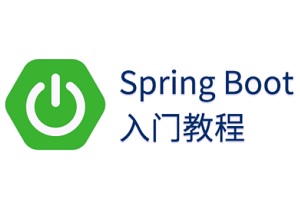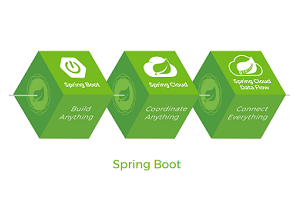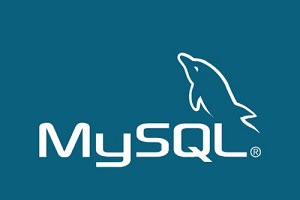JDK动态代理详解
本文主要介绍JDK动态代理的基本原理,让大家更深刻的理解JDK Proxy,知其然知其所以然。明白JDK动态代理真正的原理及其生成的过程,我们以后写JDK Proxy可以不用去查demo,就可以徒手写个完美的Proxy。下面首先来个简单的Demo,后续的分析过程都依赖这个Demo去介绍,例子采用JDK1.8运行。
JDK Proxy HelloWorld
package com.yao.proxy;
/**
* Created by robin
*/
public interface Helloworld {
void sayHello();
}
package com.yao.proxy;
import com.yao.HelloWorld;
/**
* Created by robin
*/
public class HelloworldImpl implements HelloWorld {
public void sayHello() {
System.out.print("hello world");
}
}
package com.yao.proxy;
import java.lang.reflect.InvocationHandler;
import java.lang.reflect.Method;
/**
* Created by robin
*/
public class MyInvocationHandler implements InvocationHandler{
private Object target;
public MyInvocationHandler(Object target) {
this.target=target;
}
public Object invoke(Object proxy, Method method, Object[] args) throws Throwable {
System.out.println("method :"+ method.getName()+" is invoked!");
return method.invoke(target,args);
}
}
package com.yao.proxy;
import com.yao.HelloWorld;
import java.lang.reflect.Constructor;
import java.lang.reflect.InvocationHandler;
import java.lang.reflect.InvocationTargetException;
import java.lang.reflect.Proxy;
/**
* Created by robin
*/
public class JDKProxyTest {
public static void main(String[]args) throws NoSuchMethodException, IllegalAccessException, InvocationTargetException, InstantiationException {
//这里有两种写法,我们采用略微复杂的一种写法,这样更有助于大家理解。
Class<?> proxyClass= Proxy.getProxyClass(JDKProxyTest.class.getClassLoader(),HelloWorld.class);
final Constructor<?> cons = proxyClass.getConstructor(InvocationHandler.class);
final InvocationHandler ih = new MyInvocationHandler(new HelloworldImpl());
HelloWorld helloWorld= (HelloWorld)cons.newInstance(ih);
helloWorld.sayHello();
//下面是更简单的一种写法,本质上和上面是一样的
/*
HelloWorld helloWorld=(HelloWorld)Proxy.
newProxyInstance(JDKProxyTest.class.getClassLoader(),
new Class<?>[]{HelloWorld.class},
new MyInvocationHandler(new HelloworldImpl()));
helloWorld.sayHello();
*/
}
}
运行上面的代码,这样一个简单的JDK Proxy就实现了。
代理生成过程
我们之所以天天叫JDK动态代理,是因为这个代理class是由JDK在运行时动态帮我们生成。在解释代理生成过程前,我们先把-Dsun.misc.ProxyGenerator.saveGeneratedFiles=true 这个参数加入到JVM 启动参数中,它的作用是帮我们把JDK动态生成的proxy class 的字节码保存到硬盘中,帮助我们查看具体生成proxy的内容。我用的Intellij IDEA ,代理class生成后直接放在项目的根目录下的,以具体的包名为目录结构。
代理类生成的过程主要包括两部分:
1、代理类字节码生成
2、把字节码通过传入的类加载器加载到虚拟机中
Proxy类的getProxyClass方法入口:需要传入类加载器和interface
然后调用getProxyClass0方法,里面的注解解释很清楚,如果实现当前接口的代理类存在,直接从缓存中返回,如果不存在,则通过ProxyClassFactory来创建。这里可以明显看到有对interface接口数量的限制,不能超过65535。其中proxyClassCache具体初始化信息如下:
proxyClassCache = new WeakCache<>(new KeyFactory(), new ProxyClassFactory());
其中创建代理类的具体逻辑是通过ProxyClassFactory的apply方法来创建的。
ProxyClassFactory里的逻辑包括了包名的创建逻辑,调用ProxyGenerator. generateProxyClass生成代理类,把代理类字节码加载到JVM。
1、包名生成逻辑默认是com.sun.proxy,如果被代理类是 non-public proxy interface ,则用和被代理类接口一样的包名,类名默认是$Proxy 加上一个自增的整数值。
2、包名类名准备好后,就是通过ProxyGenerator. generateProxyClass根据具体传入的接口创建代理字节码,-Dsun.misc.ProxyGenerator.saveGeneratedFiles=true 这个参数就是在该方法起到作用,如果为true则保存字节码到磁盘。代理类中,所有的代理方法逻辑都一样都是调用invocationHander的invoke方法,这个我们可以看后面具体代理反编译结果。
3、把字节码通过传入的类加载器加载到JVM中: defineClass0(loader, proxyName,proxyClassFile, 0, proxyClassFile.length);。
private static final class ProxyClassFactory
implements BiFunction<ClassLoader, Class<?>[], Class<?>>
{
// prefix for all proxy class names
private static final String proxyClassNamePrefix = "$Proxy";
// next number to use for generation of unique proxy class names
private static final AtomicLong nextUniqueNumber = new AtomicLong();
@Override
public Class<?> apply(ClassLoader loader, Class<?>[] interfaces) {
Map<Class<?>, Boolean> interfaceSet = new IdentityHashMap<>(interfaces.length);
for (Class<?> intf : interfaces) {
/*
* Verify that the class loader resolves the name of this
* interface to the same Class object.
*/
Class<?> interfaceClass = null;
try {
interfaceClass = Class.forName(intf.getName(), false, loader);
} catch (ClassNotFoundException e) {
}
if (interfaceClass != intf) {
throw new IllegalArgumentException(
intf + " is not visible from class loader");
}
/*
* Verify that the Class object actually represents an
* interface.
*/
if (!interfaceClass.isInterface()) {
throw new IllegalArgumentException(
interfaceClass.getName() + " is not an interface");
}
/*
* Verify that this interface is not a duplicate.
*/
if (interfaceSet.put(interfaceClass, Boolean.TRUE) != null) {
throw new IllegalArgumentException(
"repeated interface: " + interfaceClass.getName());
}
}
String proxyPkg = null; // package to define proxy class in
int accessFlags = Modifier.PUBLIC | Modifier.FINAL;
/*
* Record the package of a non-public proxy interface so that the
* proxy class will be defined in the same package. Verify that
* all non-public proxy interfaces are in the same package.
*/
//生成包名和类名逻辑
for (Class<?> intf : interfaces) {
int flags = intf.getModifiers();
if (!Modifier.isPublic(flags)) {
accessFlags = Modifier.FINAL;
String name = intf.getName();
int n = name.lastIndexOf('.');
String pkg = ((n == -1) ? "" : name.substring(0, n + 1));
if (proxyPkg == null) {
proxyPkg = pkg;
} else if (!pkg.equals(proxyPkg)) {
throw new IllegalArgumentException(
"non-public interfaces from different packages");
}
}
}
if (proxyPkg == null) {
// if no non-public proxy interfaces, use com.sun.proxy package
proxyPkg = ReflectUtil.PROXY_PACKAGE + ".";
}
/*
* Choose a name for the proxy class to generate.
*/
long num = nextUniqueNumber.getAndIncrement();
String proxyName = proxyPkg + proxyClassNamePrefix + num;
/*
* Generate the specified proxy class. 生成代理类的字节码
* -Dsun.misc.ProxyGenerator.saveGeneratedFiles=true 在该部起作用
*/
byte[] proxyClassFile = ProxyGenerator.generateProxyClass(
proxyName, interfaces, accessFlags);
try {
//加载到JVM中
return defineClass0(loader, proxyName,
proxyClassFile, 0, proxyClassFile.length);
} catch (ClassFormatError e) {
/*
* A ClassFormatError here means that (barring bugs in the
* proxy class generation code) there was some other
* invalid aspect of the arguments supplied to the proxy
* class creation (such as virtual machine limitations
* exceeded).
*/
throw new IllegalArgumentException(e.toString());
}
}
}
我们可以根据代理类的字节码进行反编译,可以得到如下结果,其中HelloWorld只有sayHello方法,但是代理类中有四个方法 包括了Object上的三个方法:equals,toString,hashCode。
代理的大概结构包括4部分:
1、静态字段:被代理的接口所有方法都有一个对应的静态方法变量;
2、静态块:主要是通过反射初始化静态方法变量;
3、具体每个代理方法:逻辑都差不多就是 h.invoke,主要是调用我们定义好的invocatinoHandler逻辑,触发目标对象target上对应的方法;
4、构造函数:从这里传入我们InvocationHandler逻辑;
package com.sun.proxy;
import com.yao.HelloWorld;
import java.lang.reflect.InvocationHandler;
import java.lang.reflect.Method;
import java.lang.reflect.Proxy;
import java.lang.reflect.UndeclaredThrowableException;
public final class $Proxy0 extends Proxy implements HelloWorld {
private static Method m1;
private static Method m3;
private static Method m2;
private static Method m0;
public $Proxy0(InvocationHandler var1) throws {
super(var1);
}
public final boolean equals(Object var1) throws {
try {
return ((Boolean)super.h.invoke(this, m1, new Object[]{var1})).booleanValue();
} catch (RuntimeException | Error var3) {
throw var3;
} catch (Throwable var4) {
throw new UndeclaredThrowableException(var4);
}
}
public final void sayHello() throws {
try {
super.h.invoke(this, m3, (Object[])null);
} catch (RuntimeException | Error var2) {
throw var2;
} catch (Throwable var3) {
throw new UndeclaredThrowableException(var3);
}
}
public final String toString() throws {
try {
return (String)super.h.invoke(this, m2, (Object[])null);
} catch (RuntimeException | Error var2) {
throw var2;
} catch (Throwable var3) {
throw new UndeclaredThrowableException(var3);
}
}
public final int hashCode() throws {
try {
return ((Integer)super.h.invoke(this, m0, (Object[])null)).intValue();
} catch (RuntimeException | Error var2) {
throw var2;
} catch (Throwable var3) {
throw new UndeclaredThrowableException(var3);
}
}
static {
try {
m1 = Class.forName("java.lang.Object").getMethod("equals", new Class[]{Class.forName("java.lang.Object")});
m3 = Class.forName("com.yao.HelloWorld").getMethod("sayHello", new Class[0]);
m2 = Class.forName("java.lang.Object").getMethod("toString", new Class[0]);
m0 = Class.forName("java.lang.Object").getMethod("hashCode", new Class[0]);
} catch (NoSuchMethodException var2) {
throw new NoSuchMethodError(var2.getMessage());
} catch (ClassNotFoundException var3) {
throw new NoClassDefFoundError(var3.getMessage());
}
}
}
常见问题:
1、toString() hashCode() equal()方法 调用逻辑:这个三个Object上的方法,如果被调用将和其他接口方法方法处理逻辑一样,都会经过invocationHandler逻辑,从上面的字节码结果就可以明显看出。其他Object上的方法将不会走代理处理逻辑,直接走Proxy继承的Object上方法逻辑。
2、interface 含有equals,toString hashCode方法时,和处理普通接口方法一样,都会走invocation handler逻辑,以目标对象重写的逻辑为准去触发方法逻辑;
3、interface含有重复的方法签名,以接口传入顺序为准,谁在前面就用谁的方法,代理类中只会保留一个,不会有重复的方法签名;
文章转自:https://my.oschina.net/robinyao/blog/811193
 关注公众号
关注公众号
低调大师中文资讯倾力打造互联网数据资讯、行业资源、电子商务、移动互联网、网络营销平台。
持续更新报道IT业界、互联网、市场资讯、驱动更新,是最及时权威的产业资讯及硬件资讯报道平台。
转载内容版权归作者及来源网站所有,本站原创内容转载请注明来源。
-
上一篇

docker连接spring boot和mysql容器
在之前使用docker部署运行了Spring Boot的小例子,但是没有使用数据库。在这一篇中,介绍docker如何启动mysql容器,以及如何将Spring Boot容器与mysql容器连接起来运行。 docker基本命令: 首先熟悉一下在操作过程中常用的docker基本命令: docker images:列出所有docker镜像 docker ps:列出所有运行中的容器,-a参数可以列出所有容器,包括停止的 docker stop container_id:停止容器 docker start container_name:启动已被停止的容器 docker rm container_id:删除已经停止的容器,加-f选项可以强制删除正在运行的容器 docker rmi image_id:删除镜像,前提是该镜像没有对应的容器 docker运行mysql容器 首先是新建Dockerfile: FROMubuntu:14.04 MAINTAINERloveqh RUNapt-getupdate RUNapt-get-yinstallmysql-server RUN/etc/init....
-
下一篇

zabbix自动化线上实战--Zabbix lld发现磁盘监控
Zabbix3.0入门到生产环境应用实战: http://www.roncoo.com/course/view/fb3050a5b34b42f39ccad83ebebc89c1 一、软件版本 操作系统:CentOS-6.5-x86_64 zabbix版本:3.0.3 二、脚本编写: 1、python版本: #!/usr/bin/env python import json import subprocess def get_disk(): cmd = """grep -E "(vd[a-z]$|sd[a-z]$)" /proc/partitions|awk '{print $4}'""" disk_data = subprocess.Popen(cmd, shell=True, stdout=subprocess.PIPE, stderr=subprocess.STDOUT) disk_total = [] disktotal_dict = {"data":None} for dev in disk_data.stdout.readlines(): disk_dic...
相关文章
文章评论
共有0条评论来说两句吧...











 微信收款码
微信收款码 支付宝收款码
支付宝收款码